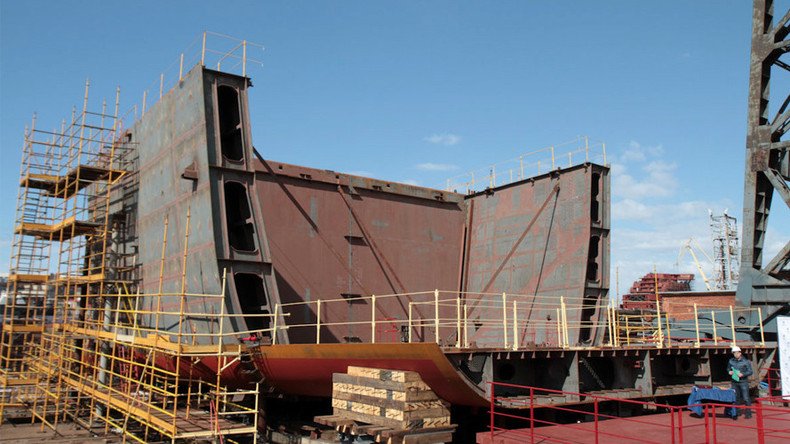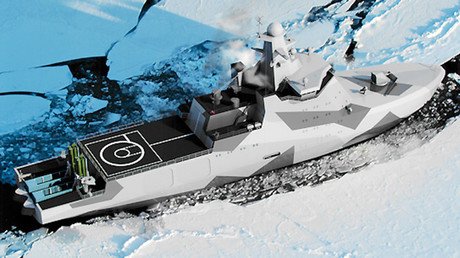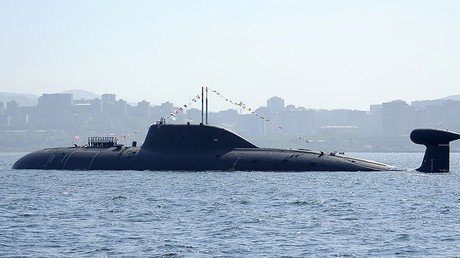Russia’s new Arctic patrol ship to be ready for service in 2020 – shipyard

The lead of Russia’s novel ice-rated warship class is to be floated in 2019 and will be ready to be handed over to the military a year later, the shipyard building it said. It added that the laying down of the second ship of the class would be postponed.
The ‘Ivan Papanin,’ the lead of the Project 23550 class, was laid down in April, signaling the Russian Navy’s commitment to project a presence in the Arctic region. The ‘Ivan Papanin’ is an 8,500-ton Arctic multirole ship, and is being built by the Admiralty Shipyard in St. Petersburg, a leading Russian producer of icebreakers for civilian and military use.
The shipyard plans to float the vessel in 2019 and hand it over to the Defense Ministry for sea trials in 2020, its chief, Aleksandr Buzakov, said in an interview with RIA Novosti. He added that the second ship of the class, the ‘Nikolay Zubov,’ will be laid down in 2019, later than previously expected, and would be ready for service sometime in 2022.
Buzakov said the shipyard’s work on Project 23550 benefited from the experience it gained while building the ‘Ilya Muromets,’ an unarmed icebreaker contracted by the Defense Ministry and completed earlier this year.
“Project 23550 patrol ships are multifunctional too,” he explained. “[They can perform] guard duty, convoy or tow ships, transport special cargo and of course conduct patrol missions.”
He added that the shipyard expects the Defense Ministry to contract more ships of this class, once the two pilot boats prove their performance.
“We happen to have been specializing in building civilian ice-rated ships for the last 25 years,” he added. “So we have lots of experience.”
The senior manager also gave the latest update for the six Project 636 Varshavyanka submarines (Klio, according to NATO designation) it is constructing for the Russian Pacific Fleet. Russia currently has six such ships of the latest upgraded 636.3 variant and will double the number by 2022, according to Buzakov.
“We laid down the two first submarines on July 28, the ‘Petropavlovsk-Kamchatsky’ and the ‘Volkhov.’ The ‘Petropavlovsk-Kamchatsky’ will be floated in 2019 and handed over the same year,” he said. “The second boat, the ‘Volkhov’ will be floated in spring 2020 and, again, handed over before that year’s end.”
“The third submarine, the ‘Magadan,’ and the fourth, the ‘Ufa,’ will be delivered in 2021 a short time apart. We will lay them down in 2019 and float one in 2020 and the other one in 2021. The fifth boat is called the ‘Mozhaysk’ while the sixth is yet to be named by the Navy. Both will be handed over in 2022.”
The Admiralty shipyard is also constructing two Lada-class diesel-electric attack submarines. The class lead, the ‘St. Petersburg,’ was commissioned 2010, but only as a “test service.” The ship’s construction was underfunded and it was not fully constructed at the time. The two additional submarines currently under construction faced numerous delays as necessary alterations to design were suggested based on the ‘St. Petersburg’ operation, Buzakov said.
“The construction has since gone full speed ahead. In July we have assembled [the Kronstadt] hull. Next year we plan to float the submarine and hand it over to the Navy in 2020, as stated in the contract. The deadline for handing over the ‘Velikie Luki’ is 2021. We have manufactured the hull and are working on insulation now.
“There are reasons this work goes ahead not as fast as with the ‘Kronstadt,’ but we will try to deliver the ship in 2021,” he added.














